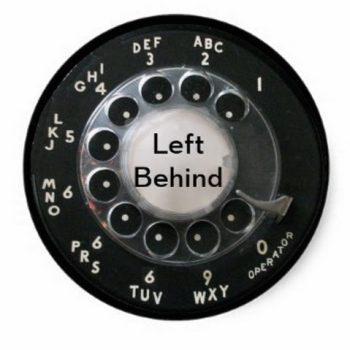I will not be writing about The Vibes.
My main response to everything I have read about this is a fervent desire to be given some chance to read something about something else. Almost anything else.

Fortunately, unlike those mired in this weeks-long Vibes Discourse, my primary interactions with the world and with this world wide web are not algorithm-driven and algorithm-filtered. I have an RSS reader. I get to choose what to read.
And even if a few of the blogs and websites that I subscribe to turn out to be obsessively focused on Vibes Discourse, I can skim past them to the larger world, beyond the gated communities of the algorithmic feeds, where Other Things are still happening. Actual things actually happening, not Vibes or opinions about Vibes.
An RSS reader also lets me read at my own pace, “starring” links, posts, and articles to read or re-read later. The one I use — Inoreader — only keeps count of these starred links until the number gets over 1,000, after which it stops keeping specific track and just lists it as “1,000+.”
My bookmarks/starred links/to-be-read pile has again reached “1,000+” territory, but we’re also finally past peak-Spring at the Big Box, so now I’ve finally got a chance to plow through all of that.
This turns out to be an excellent way of avoiding the dismal treadmill of endless Vibes Discourse. Perhaps you’d like to join me in doing that.
Here’s a video that Charles Kuffner linked to back in May but I only got around to watching last week. It’s based on an article in Nature, “Earth’s new address: ‘Solar System, Milky Way, Laniakea’.” That article is from 2014, so this isn’t breaking news and it may not be news to you at all. But it was to me, and I found this fascinating:
The supercluster of galaxies that includes the Milky Way is 100 times bigger in volume and mass than previously thought, a team of astronomers says. They have mapped the enormous region and given it the name Laniakea — Hawaiian for “immeasurable heaven.”
Galaxies tend to huddle in groups called clusters; regions where these clusters are densely packed are known as superclusters. But the definition of these massive cosmic structures is vague.
The new study, published in Nature, describes a novel way to define where one supercluster ends and another begins. A team led by Brent Tully, an astronomer at the University of Hawaii in Honolulu, charted the motions of galaxies to infer the gravitational landscape of the local Universe, and redraw its map.
Boom de yada!
If you really bear down and concentrate, you can almost grasp the scale of our solar system. Millions and billions of miles is something we’re almost able to imagine, but even just here, “locally,” we have to constantly remind ourselves that it’s all so much bigger than we’re imagining even as we’re consciously trying to make that correction of “Nope, even bigger than that.”
Beyond that, it’s all incomprehensibly vast. We can measure and calculate these distances, but we can’t begin to understand them. Just trying to will make you a little dizzy and you’ll wind up looking down to see your white-knuckled hands fiercely grabbing onto whatever solid thing is closest. It’s just all so big.
Anyway, the video. In mapping our own supercluster of galaxies, this team of astronomers also wound up mapping our “nearest” neighboring supercluster, which they’ve named Perseus-Pisces:
Since watching that video last week, I’ve taken to trash-talking Perseus-Pisces as our rival supercluster.
Although, c’mon, can you even call that pathetic glob of second-rate galaxies a supercluster? Puh-leeze. Nothing “super” about that sorry excuse for a cluster. Even their Great Attractors ain’t that great. I’m Team Laniakea all the way.
Laniakea rules! Perseus-Pisces sucks!
I realize that this reaction to the fascinating work from these scientists is, on one level, pretty dumb. But that’s part of my point here. The human impulse to create arbitrary in-group and out-group divisions between “Us” and “Them” is always pretty dumb.
But we can’t seem to help ourselves. Even the humans who have devoted years of study into why we do this wind up doing some variation of the same thing themselves, from St. Augustine to those primatologists studying bonobos who had all the evo-psych bros so excited a few years back. Whether it’s original sin or some evolutionary survival instinct, human nature just seems to bristle at the notion of boundlessly inclusive love or mutuality. As soon as any one of us suggests anything even close to such boundlessly expansive solidarity everybody around them reflexively tries to re-erect and reinforce some boundaries. “Who is my neighbor?”
So let’s make some concession to that instinct. The boundless universal solidarity and love called for in the Gospels and in the epistles of Paul and King just seems harder for us humans to grasp than even the mind-blowingly vast distances on that oh-so-cool map of superclusters above. Let’s just acknowledge that.
It’s unpleasant, ignoble, and maybe ultimately self-defeating, but the easiest way to create solidarity, mutual love and mutual respect among humans is to do so within the bounds of an in-group defined against some out-group exempted from that solidarity, love, and respect. Given that, maybe the best possible outcome is to create the largest possible in-group and to contrast it with the remotest possible out-group …
You know, like those rat-bastards over there in that lame-ass, not-so-supercluster Perseus-Pisces. Screw those guys. Laniakea all the way, baby!













